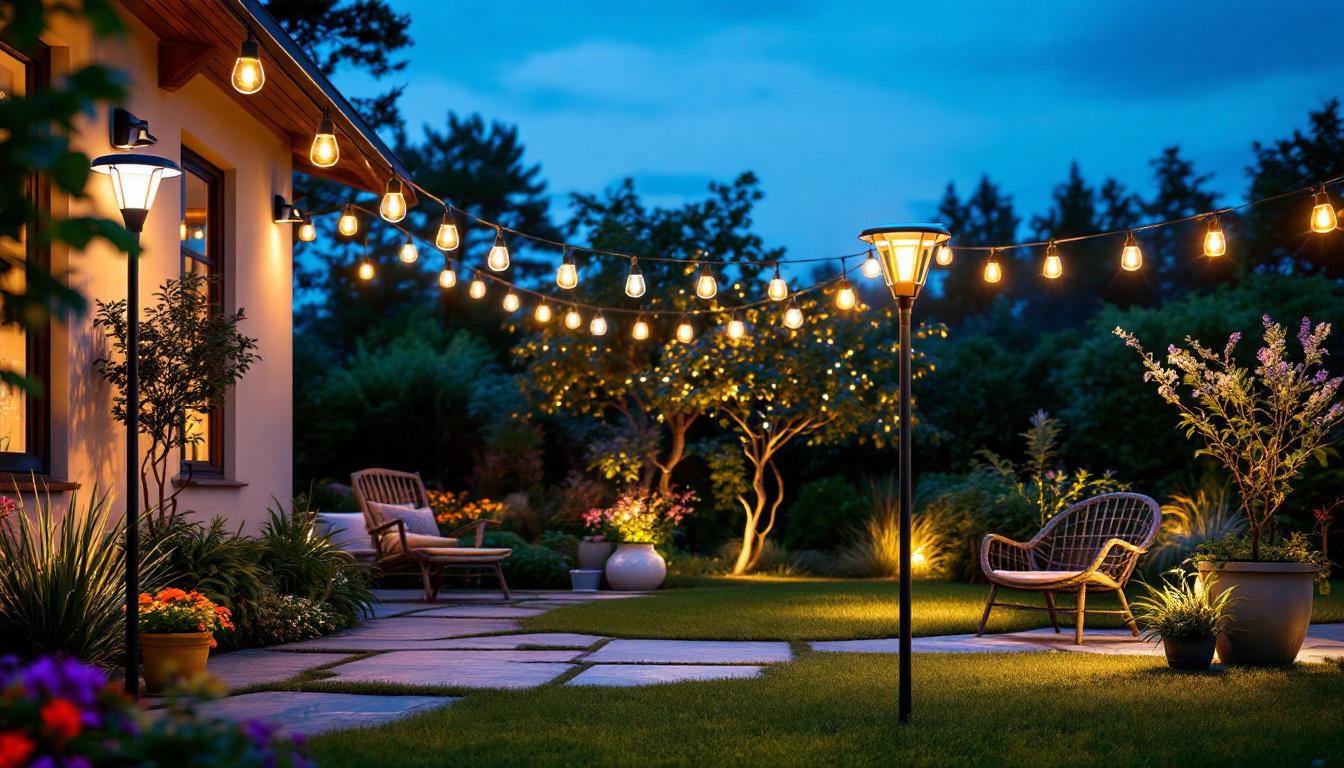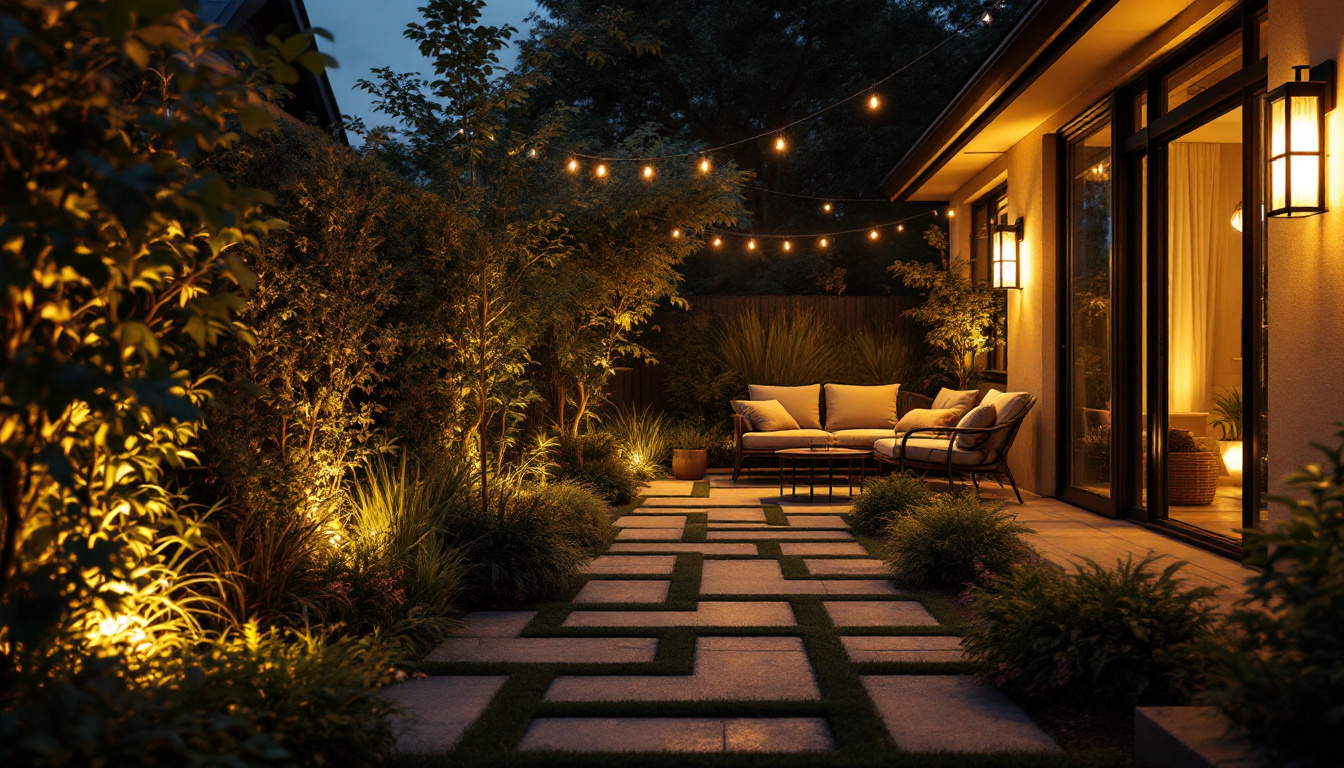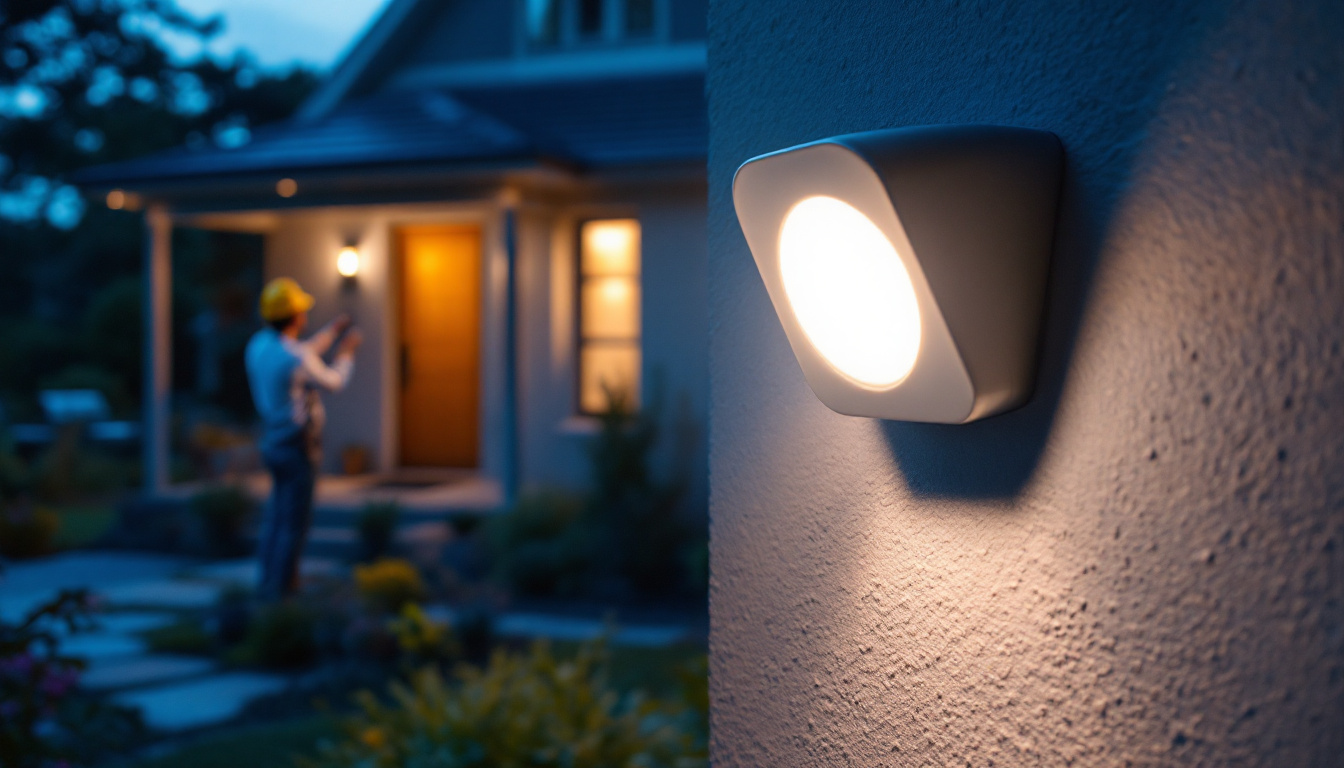
Solar lighting has moved far beyond the novelty stage. What once seemed like a niche or backup option is now a robust, reliable, and cost-effective solution for a wide range of lighting needs. For lighting contractors, understanding the capabilities and applications of solar lighting is essential to stay competitive and meet evolving client demands.
The core advantage of solar lighting lies in its ability to convert sunlight into electricity, powering lights without the need for grid connections. This independence from traditional power sources opens up possibilities in locations where wiring is impractical or prohibitively expensive. It also aligns with growing environmental concerns and regulations aiming to reduce carbon footprints.
Moreover, advancements in solar technology have significantly improved the efficiency and aesthetics of solar lighting systems. Modern solar panels are more compact and powerful, allowing for sleeker designs that can blend seamlessly into various architectural styles. Additionally, innovations in LED technology have made solar lights brighter and longer-lasting, ensuring that they can effectively illuminate spaces even during extended periods of low sunlight. This combination of efficiency and design flexibility makes solar lighting an attractive option for residential, commercial, and public spaces alike.
Furthermore, the integration of smart technology into solar lighting systems is revolutionizing how we think about outdoor illumination. With features such as motion sensors, timers, and remote control capabilities, users can optimize energy consumption and enhance security. These smart solar lights can automatically adjust brightness based on the time of day or the presence of movement, providing not only convenience but also significant energy savings. As cities and communities look to create more sustainable environments, the adoption of smart solar lighting is likely to play a pivotal role in shaping the future of urban landscapes.
Advancements in photovoltaic (PV) technology have dramatically increased the efficiency of solar panels. Modern panels can capture more sunlight in less space, making solar lighting systems more compact and versatile. This means that even in urban environments with limited roof or ground space, solar lighting can be effectively integrated. The latest innovations, such as bifacial solar panels, allow for light capture on both sides, further enhancing energy generation potential and making them even more suitable for diverse applications.
High-efficiency panels also perform better in low-light conditions, extending the usability of solar lighting in regions with variable weather. For contractors, this translates to greater reliability and fewer service calls related to performance issues. Additionally, the integration of smart technology in PV systems enables real-time monitoring and performance analytics, allowing users to track energy production and consumption more effectively. This data-driven approach not only enhances system efficiency but also empowers users to make informed decisions about energy use and sustainability practices.
Battery technology has evolved alongside solar panels. Lithium-ion batteries, in particular, offer longer life cycles, faster charging, and better energy density compared to older lead-acid batteries. These improvements ensure solar lighting systems can store enough energy to provide consistent illumination throughout the night, even during extended periods of cloudy weather. Furthermore, advancements in solid-state battery technology promise even greater safety and efficiency, paving the way for more robust energy storage solutions in the future.
Smart battery management systems further optimize energy use, preventing overcharging and deep discharging, which can degrade battery life. This technology reduces maintenance needs and increases system longevity—key selling points when pitching solar lighting to clients. The integration of artificial intelligence in these systems can also predict energy needs based on usage patterns, allowing for dynamic adjustments that maximize efficiency and performance. This level of sophistication ensures that solar lighting systems can adapt to the varying demands of different environments and applications.
Light Emitting Diodes (LEDs) have revolutionized lighting efficiency. Their low power consumption and high luminosity make them ideal companions for solar lighting. LEDs also offer superior durability and longer lifespans compared to traditional bulbs, reducing replacement frequency. Moreover, the ability to tune the color temperature of LEDs allows for customizable lighting solutions that can enhance aesthetics and functionality in various settings, from residential gardens to commercial spaces.
For contractors, combining LEDs with solar power means delivering bright, energy-efficient lighting solutions that minimize operational costs and environmental impact. The latest developments in smart LED technology also enable features such as dimming and motion sensing, which can further enhance energy savings and user experience. These smart lighting systems can be programmed to adjust brightness based on ambient light levels or occupancy, providing not only efficiency but also convenience and safety for users. As the demand for sustainable and intelligent lighting solutions grows, the synergy between solar technology and LED innovation will play a pivotal role in shaping the future of outdoor and indoor lighting.
Solar lighting is particularly well-suited for outdoor applications, from residential gardens to commercial landscapes. It eliminates the need for trenching or extensive wiring, which can be costly and disruptive. Solar pathway lights, spotlights, and floodlights enhance safety and aesthetics without increasing electricity bills.
Contractors can offer clients quick installation options that are also scalable. Additional units can be added with minimal effort, making solar lighting a flexible solution for evolving outdoor spaces.
Municipalities and developers are increasingly adopting solar lighting for streets, parks, and public spaces. Solar streetlights reduce infrastructure costs and improve resilience during power outages. They also contribute to sustainability goals, which are often mandated for public projects.
Lighting contractors involved in public works can leverage solar technology to meet these requirements while delivering reliable, maintenance-friendly solutions. Modular designs allow for easy upgrades and integration with smart city technologies, such as motion sensors and remote monitoring.
Solar lighting is indispensable in remote areas where grid access is limited or non-existent. Construction sites, rural communities, and emergency response zones benefit from portable, standalone solar lighting units that provide immediate illumination without waiting for electrical infrastructure.
For contractors, offering solar lighting solutions in these contexts can open new markets and demonstrate expertise in sustainable, innovative technologies.
While the initial investment in solar lighting can be higher than traditional systems, the total cost of ownership often favors solar over time. Eliminating electricity costs and reducing wiring and trenching expenses contribute to significant savings.
Maintenance costs are also lower, thanks to durable components and fewer moving parts. For clients focused on long-term budgets, solar lighting represents a smart financial choice.
Solar lighting directly reduces reliance on fossil fuels by harnessing renewable energy. This shift is crucial as governments and organizations push for greener operations and stricter emissions standards.
Lighting contractors who promote solar solutions position themselves as leaders in environmental stewardship, appealing to eco-conscious clients and enhancing their professional reputation.
Successful solar lighting installations begin with thorough site evaluations. Factors such as sunlight exposure, shading, and local climate conditions impact system performance. Contractors must assess these variables to design effective solutions tailored to each project.
Understanding client needs and usage patterns is also vital. For example, lighting requirements for a public park differ significantly from those of a private driveway or a construction site.
Regulations regarding solar installations vary by region and can affect project timelines and costs. Contractors should stay informed about local codes, permitting processes, and safety standards to ensure compliance.
Additionally, many areas offer incentives, rebates, or tax credits for solar lighting projects. Leveraging these programs can make solar options more attractive to clients and simplify the sales process.
In many cases, solar lighting must complement or integrate with existing electrical infrastructure. Contractors need to plan for hybrid systems or ensure seamless switching between grid and solar power where applicable.
Compatibility with smart controls and IoT devices is another consideration, especially for commercial and municipal projects aiming for advanced energy management.
Integration of sensors, wireless controls, and data analytics is transforming solar lighting into intelligent systems. These technologies enable adaptive lighting based on occupancy, daylight availability, or security needs, enhancing energy efficiency and user experience.
Lighting contractors who embrace smart solar solutions can offer clients cutting-edge products that reduce operational costs and provide actionable insights.
New materials in solar panels and light fixtures promise greater durability and performance. Flexible solar cells and advanced composites allow for creative design options and easier installation.
These innovations expand the possibilities for solar lighting applications, from curved architectural elements to portable and wearable lighting devices.
Emerging concepts like energy sharing and microgrids are poised to change how solar lighting fits into broader energy ecosystems. Solar lighting units could become nodes in decentralized networks, contributing excess energy back to the grid or sharing power locally.
Contractors who understand these developments will be well-positioned to advise clients on future-proof lighting investments.
Solar lighting represents a powerful tool in the modern lighting contractor’s arsenal. Its combination of technological maturity, economic benefits, and environmental advantages makes it an increasingly vital component of contemporary lighting projects.
By mastering the nuances of solar lighting-from site assessment and system design to installation and maintenance-contractors can deliver superior value to clients and differentiate themselves in a competitive market. Embracing solar lighting today prepares contractors for the demands and opportunities of tomorrow’s lighting landscape.
Ready to harness the power of solar lighting and elevate your lighting solutions? At LumenWholesale, we provide lighting contractors with the highest quality, spec-grade solar lighting products at unbeatable wholesale prices. Say goodbye to local distributor markups and hello to our extensive selection that meets rigorous industry standards. With free shipping on bulk orders, you can trust that you’re getting premium lighting at the best value — without any hidden fees. Make the smart choice for your next project and experience the perfect blend of quality, affordability, and convenience. Wholesale Lighting at the Best Value is just a click away.

Discover essential facts about industrial flood light fixtures, including benefits, installation tips, and industry stats.

Discover essential tips and expert insights for lighting contractors to master basic light fixture installations.

Discover what clients anticipate from lighting contractors when it comes to sun-powered lights.

Discover how lighting contractors can enhance their projects with outdoor light and motion sensors.